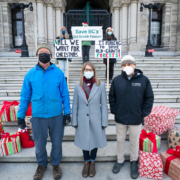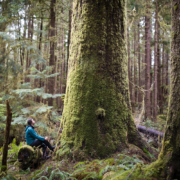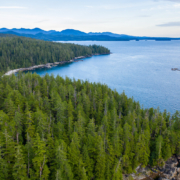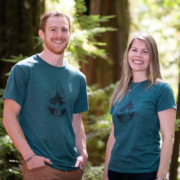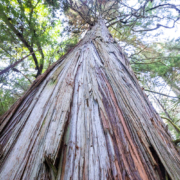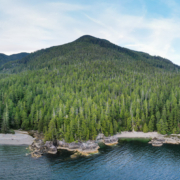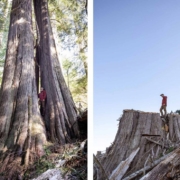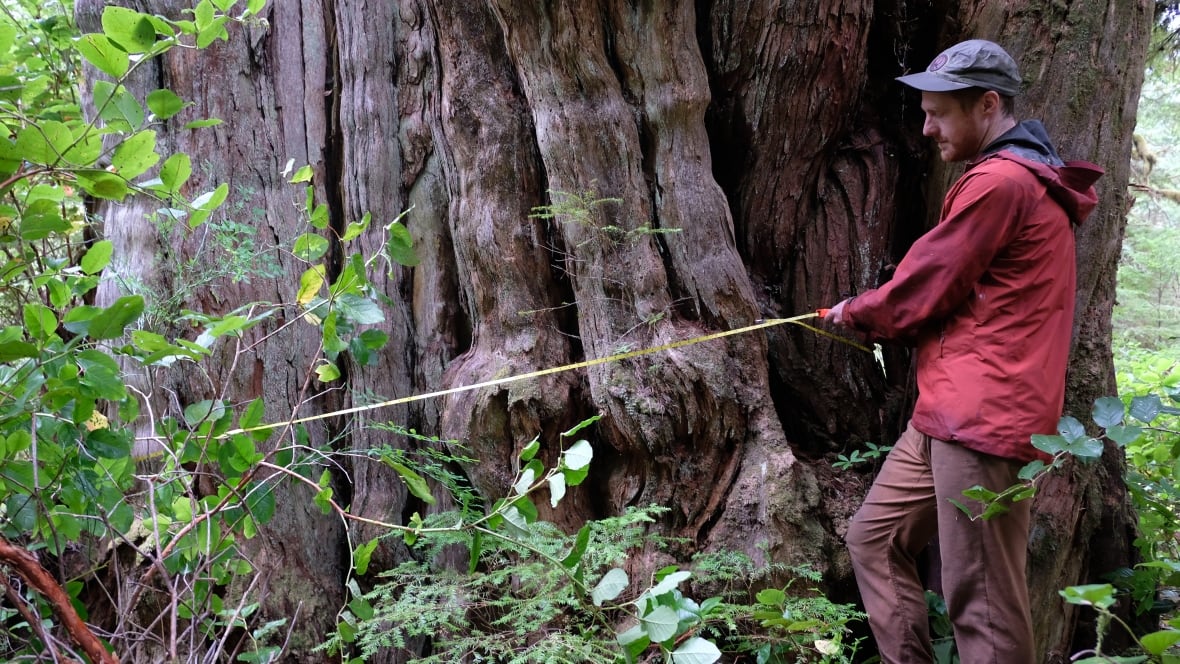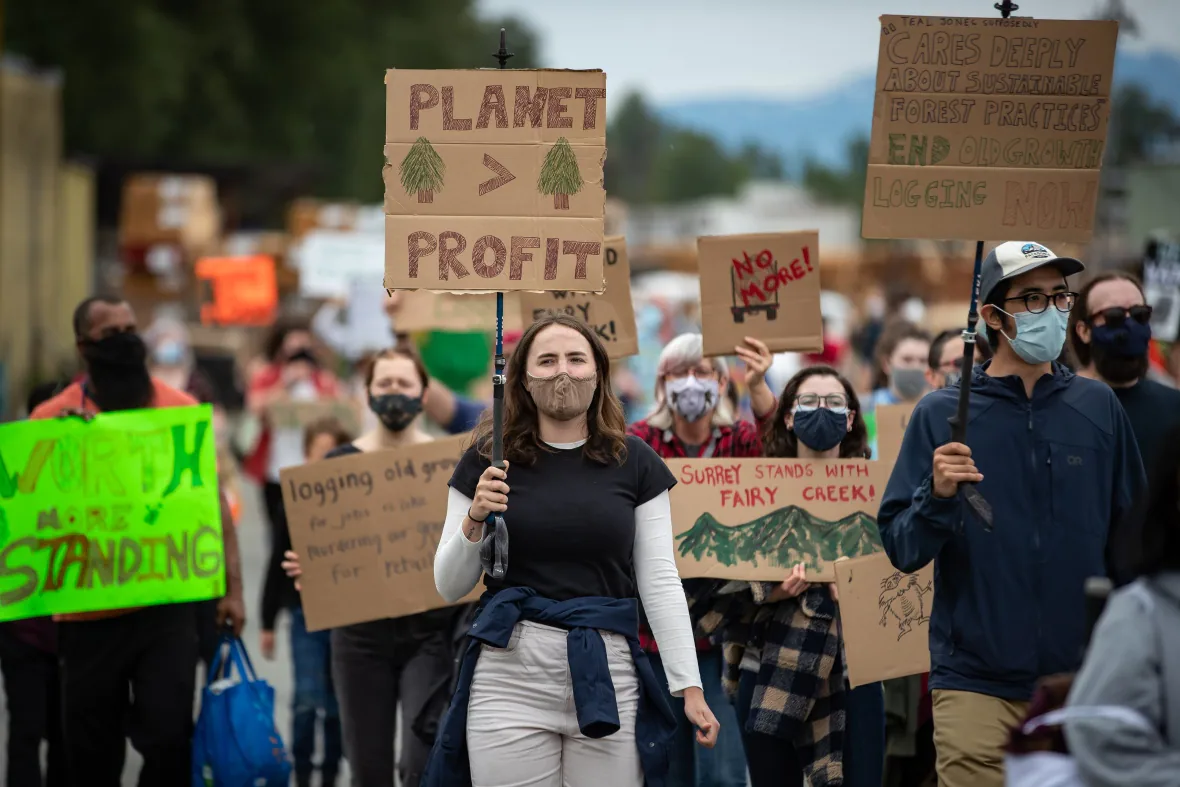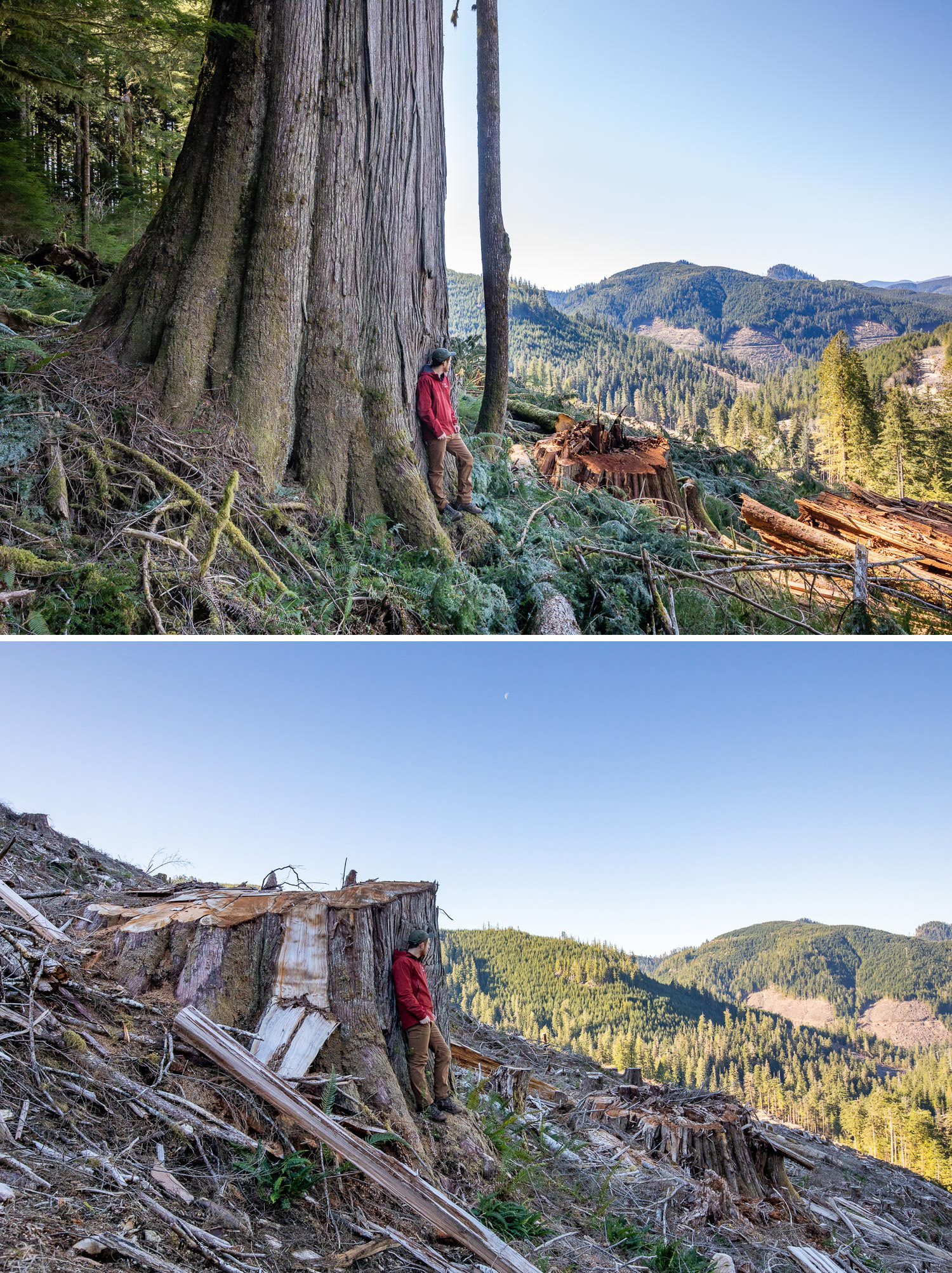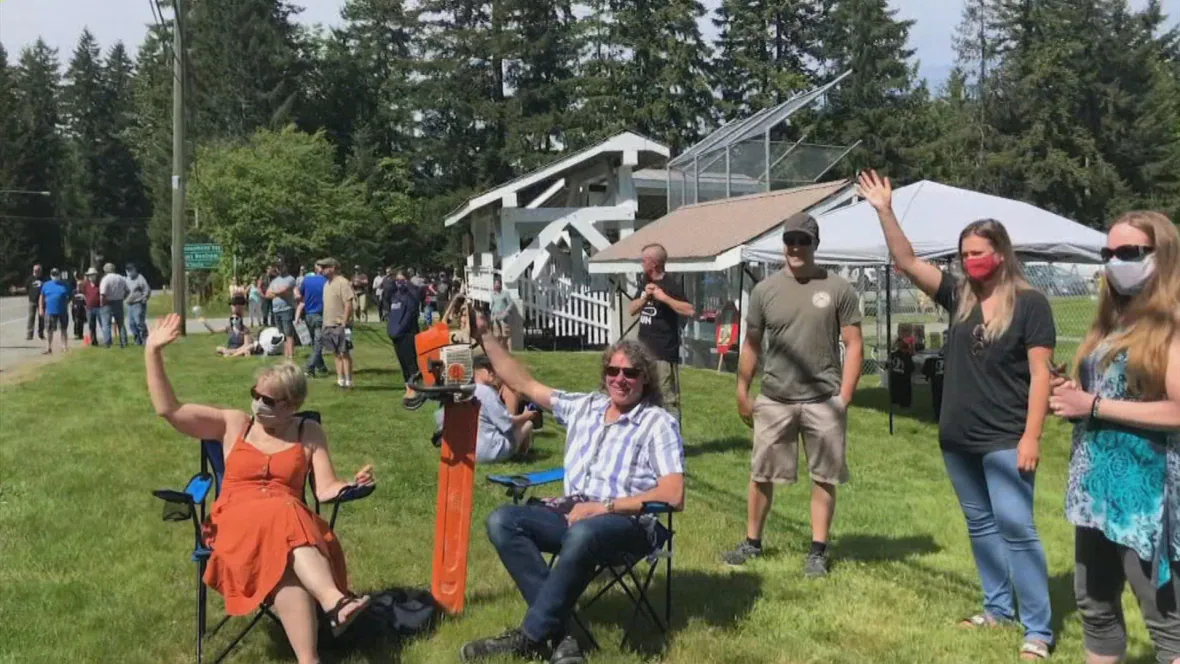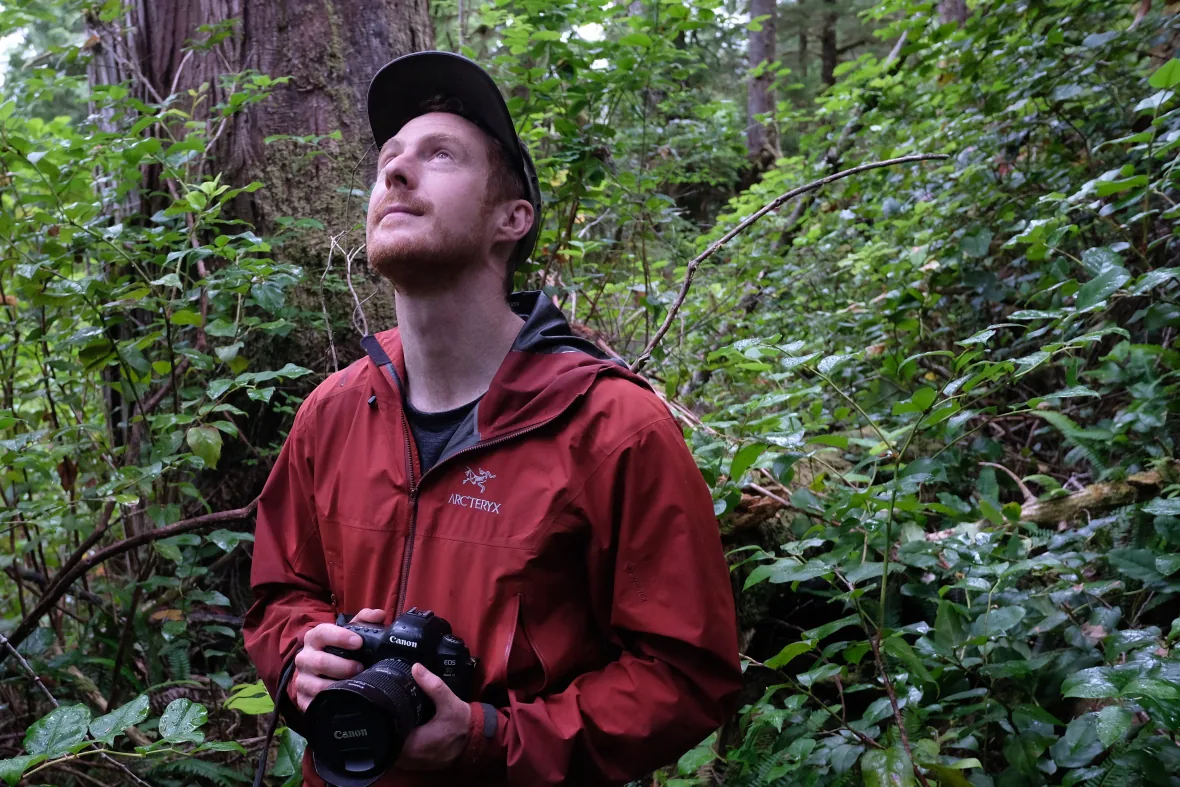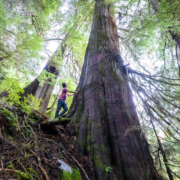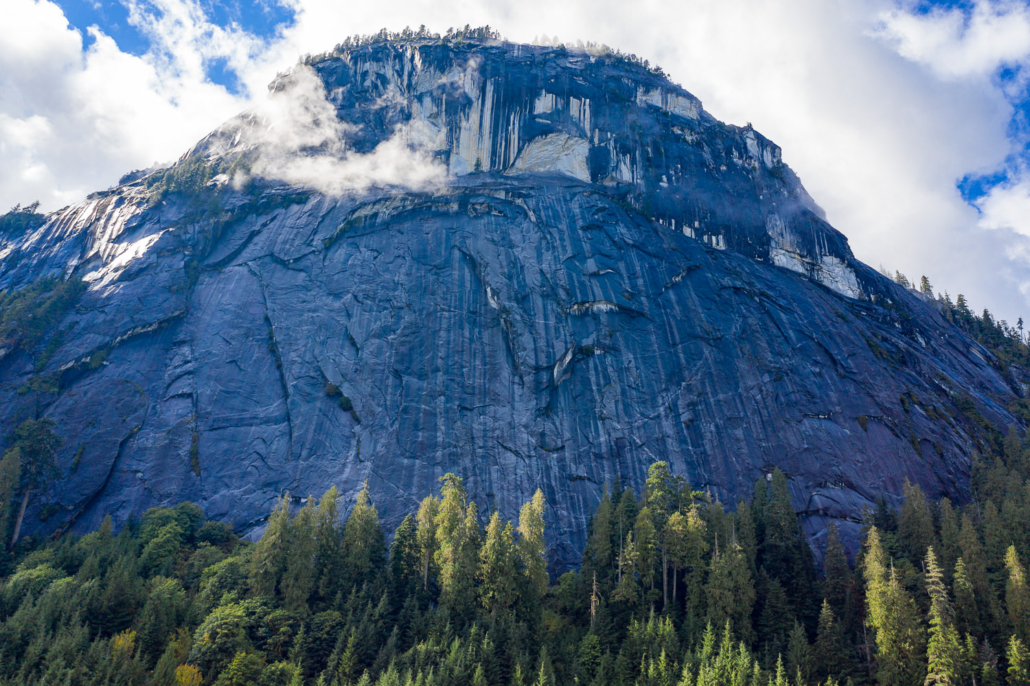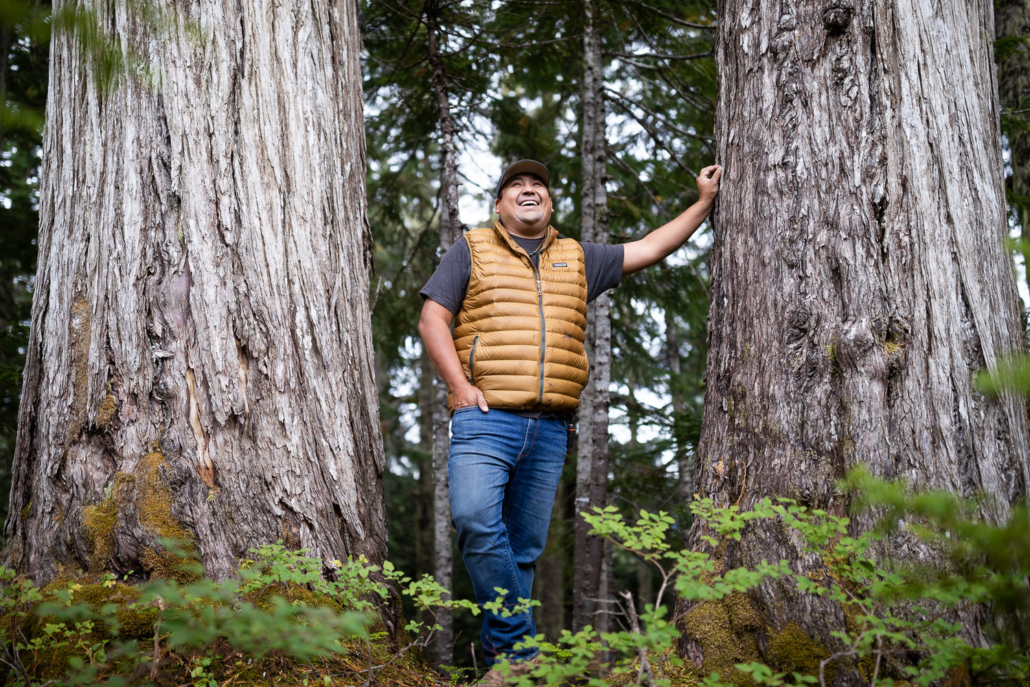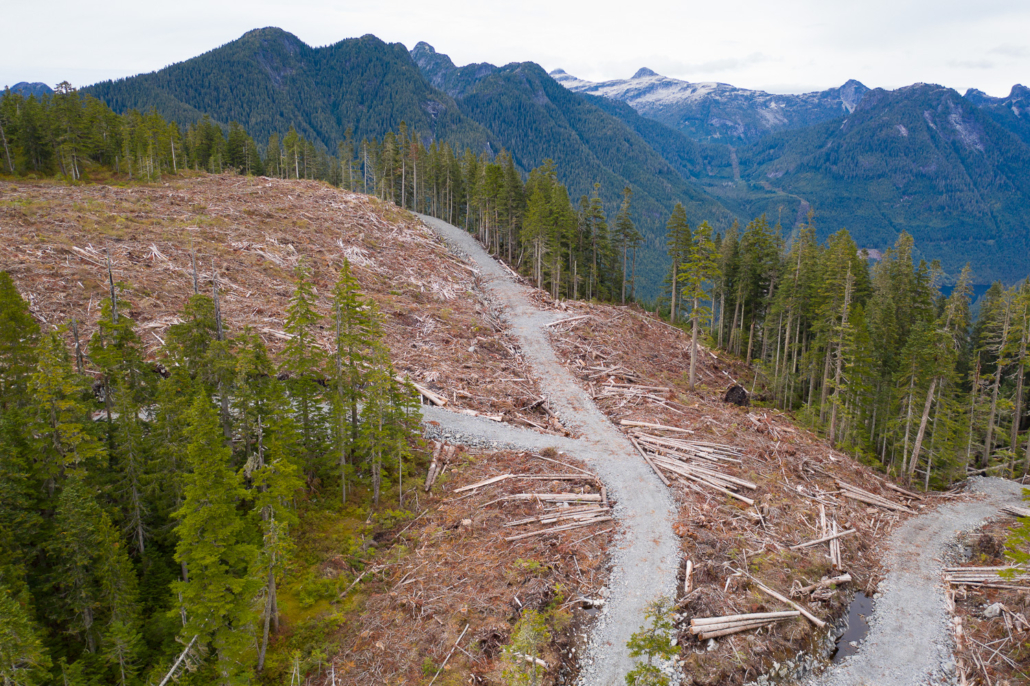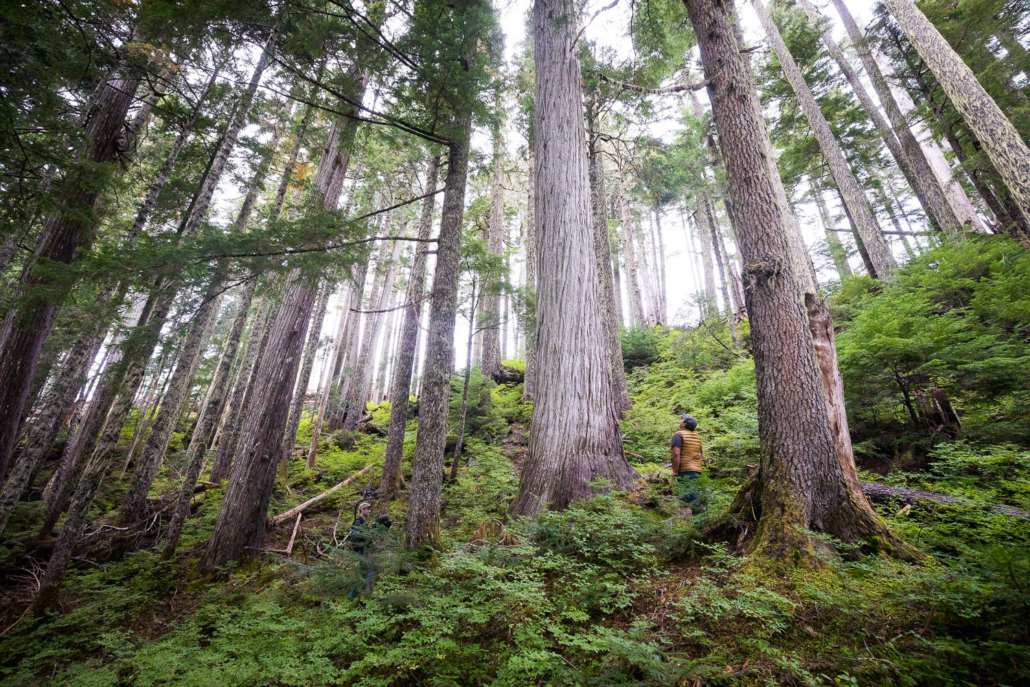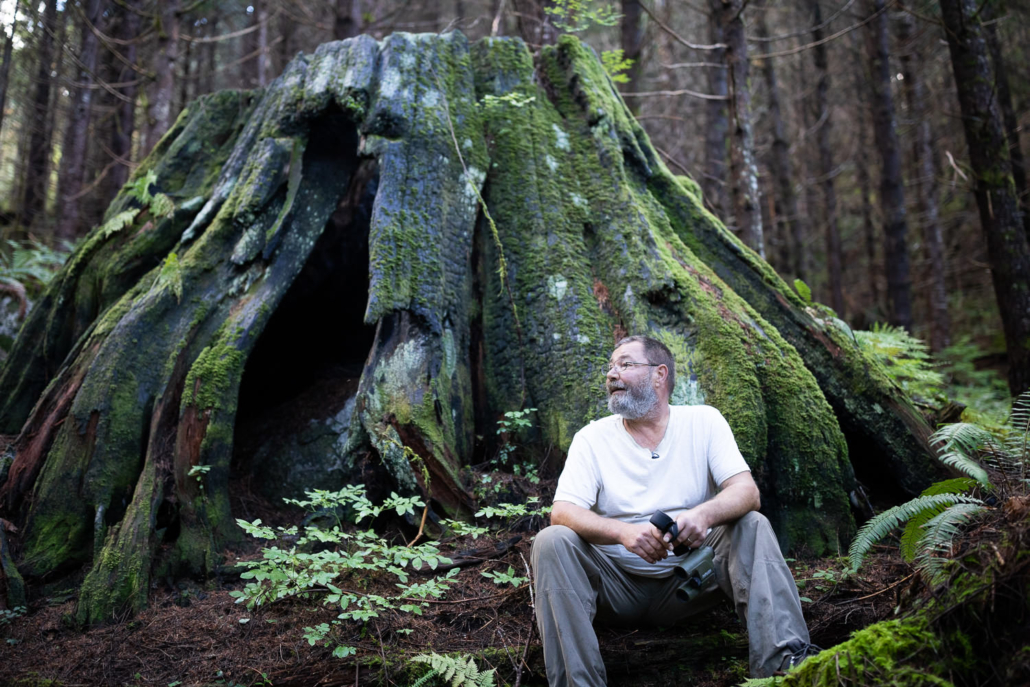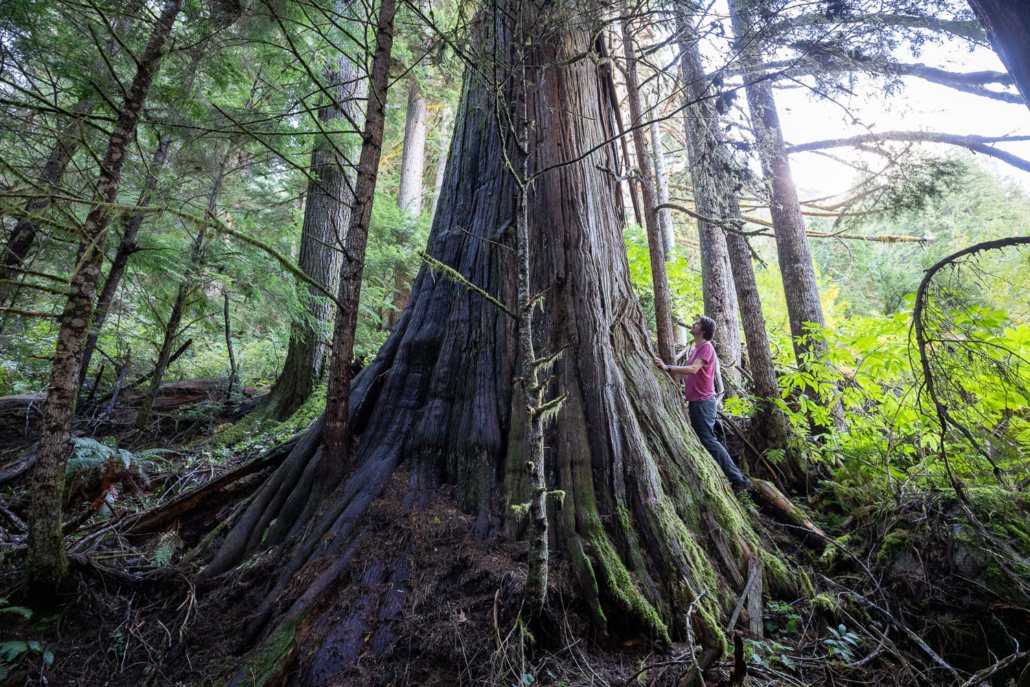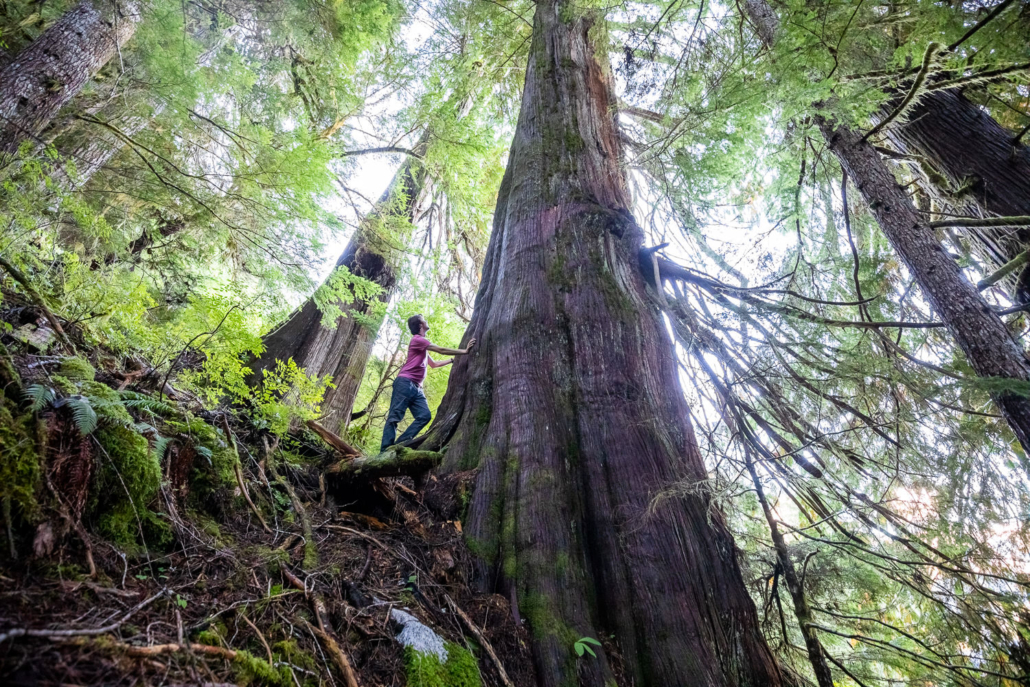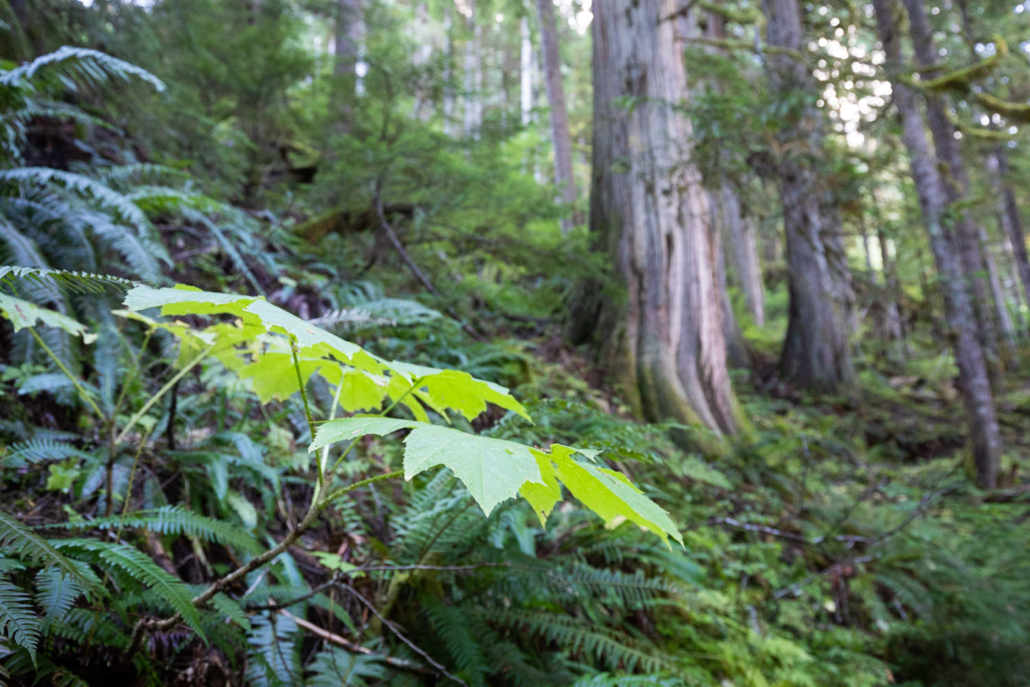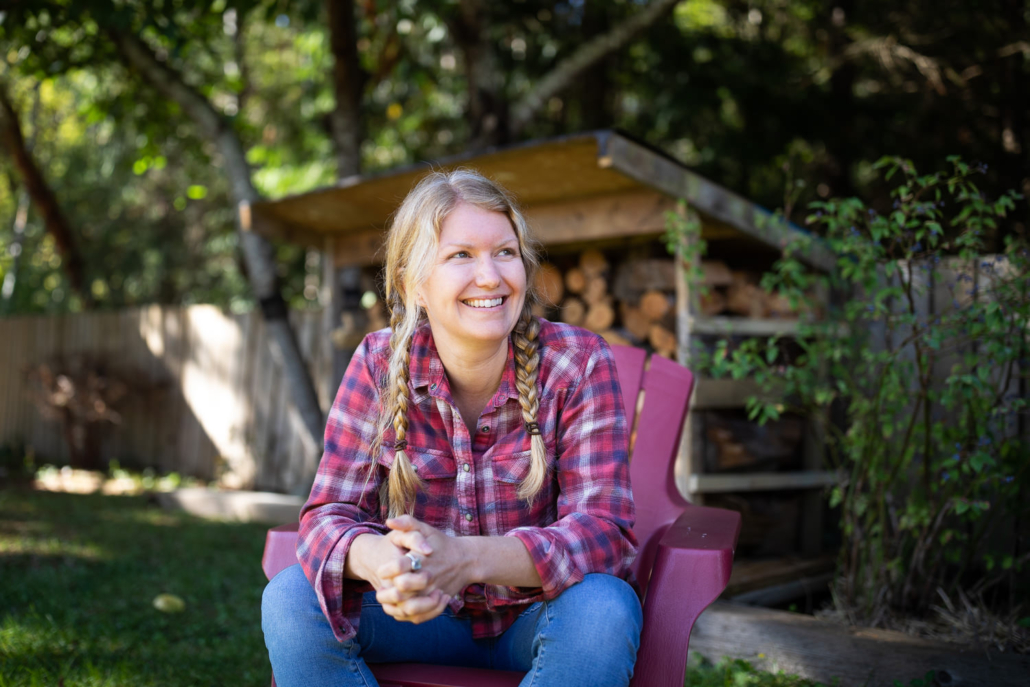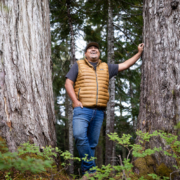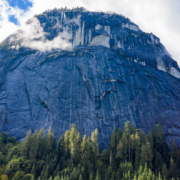Environmentalists, Green Party MLA, and prominent forest ecologist make holiday-themed appeal for provincial old-growth funding
VICTORIA (Lekwungen Territories) – Pressure on the BC provincial government to back their old-growth forest protection commitments with funding is growing with First Nations leaders, scientists, and Green Party representatives joining environmentalists to demand significant funding for old-growth protection in the 2022 provincial budget.
The Ancient Forest Alliance (AFA), along with Adam Olsen, Green Party MLA for Saanich and the Islands and Andy MacKinnon, forest ecologist and Metchosin Councillor, held a press briefing on the steps of the BC Parliament Buildings on Tuesday to discuss the urgent need for significant provincial funding to both temporarily defer and permanently protect the province’s at-risk old-growth forests.
Tying into the season of giving, the briefing featured gift-wrapped presents and signs reading “All we want for Christmas…is funding to protect old-growth forests!”
The briefing comes after the BC government announced its intention to work with First Nations to defer 2.6 million hectares of at-risk old-growth forests in early November, based on the recommendation of an independent scientific panel. Last week, the province announced that most First Nations that responded to requests for deferrals have expressed interest in discussions with the government on old-growth management, but the province is failing to back these discussions with funding to offset revenues from old-growth logging.

“We are glad the province has finally moved to protect BC’s most at-risk forests, but as long as they continue to come to the negotiation table with First Nations virtually empty-handed, they won’t fully achieve it,” stated Adam Olsen. “Many Nations are dependent upon the revenues from logging in their territories, and the government is putting them in the impossible position of having to choose between old-growth protection and economic security. This does not advance conservation or reconciliation.”
Despite logging continuing in at-risk old-growth forests identified for deferral, the BC government has yet to announce any significant new deferrals, which were recommended by the province’s Old Growth Strategic Review Panel to immediately halt the destruction of old-growth forests at high risk of biodiversity loss. $12.6 million has been allocated to support ongoing government-to-government deferral negotiations, but without greater financial support for compensation, many First Nations may be reluctant to support proposed deferrals.
However, conservationists are quick to point out that funding for deferrals is only a first step and that significant funding, in the hundreds of millions of dollars, is also needed to support First Nations-led land-use planning, Indigenous protected areas that permanently conserve old-growth, and economic alternatives to old-growth logging.
Makwala Rande Cook, a Kwakwa̱ka̱’wakw artist and Hereditary Ma’amtagila Chief, who was unable to join the press conference as anticipated, said “Old-growth forests have sustained our people for millennia. They provide critical ecosystem services that sustain the health and wellbeing of all British Columbians, but successive governments and industry have depleted them to near extinction. Indigenous communities need funding and support to protect and steward what little old-growth remains.”
Federal funding has already been made available to support old-growth protection in BC. $2.3 billion was committed earlier this year to help Canada achieve its international commitments to protect 25% of lands and waters by 2025 and 30% by 2030. Of this, several hundred million dollars are available for the expansion of protected areas in BC, with $50 million specifically allocated to BC old-growth so far. An additional $631 million has been committed for “Nature Smart Climate Solutions” with $200 million already allocated for the protection of carbon-rich ecosystems such as BC’s old-growth forests.
The Ancient Forest Alliance is urging the BC government to adopt Canada’s protected area targets and commit several hundred million dollars in conservation funding to match or exceed the federal government’s funding commitments in the upcoming spring budget.

Last week, the province announced $19 million in funding to support workers and communities impacted by logging deferrals and promised additional supports in the new year. This is a welcome step in the right direction, but conservationists are pointing to BC’s recent extreme weather events as further justification for urgent conservation funding.
“If the BC government is serious about community safety and addressing deadly climate change impacts like flooding, landslides, fires, and droughts, they must include funding in Budget 2022 to vastly expand protection of BC’s most carbon-rich and climate change resilient old-growth forests and to overhaul the forestry regime,” stated forest ecologist Andy MacKinnon. “They simply cannot afford not to.”
“Making bold promises without the funds to deliver on them is a recipe for failure, leaving millions of hectares of at-risk ancient rainforests on the chopping block,” said AFA campaigner Andrea Inness. “Right now, the question is: will there be significant funding in Budget 2022 to implement deferrals and permanent old-growth protection? Or will BC’s remaining ancient rainforests receive a lump of coal?”


